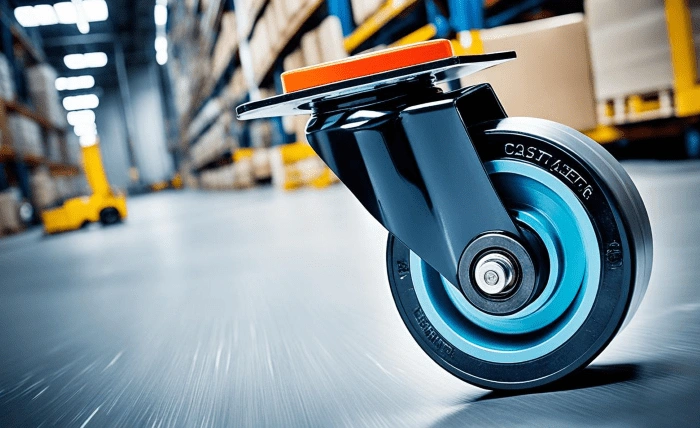Caster wheels have become essential in various industries due to their mobility and flexibility, aiding in transporting heavy equipment in warehouses and hospitals. Technological advancements, such as stainless steel roller bearings, have improved their efficiency and durability, ensuring smooth movement and prolonging their lifespan. Caster wheels enhance operational effectiveness, adapt to diverse needs, and facilitate productivity. Historically, they were created to ease the manual handling of heavy objects, transforming how industries manage loads and reducing the risk of injury. Caster wheels are vital components that enhance workflow and efficiency in everyday tasks.
Types of Caster Wheels
Caster wheels come in different types and are designed for specific needs. Swivel casters allow 360-degree movement, making them ideal for tight spaces, while rigid casters provide stability for straight-line movement. Locking casters enhance safety by keeping objects in place. The materials used also impact their effectiveness: rubber casters reduce noise and absorb shocks, steel casters support heavier loads, and nylon casters offer a lightweight, durable option for medium-duty use.
Key Applications Across Industries
Caster wheels are widely used across various industries due to their versatility. In healthcare, they are essential for transporting hospital beds and medical equipment. In warehouses and manufacturing, they improve efficiency by facilitating the movement of goods. In retail, caster wheels enhance the mobility of displays and storage units, allowing quick reconfiguration. Additionally, they are used in furniture and DIY projects to provide flexibility and ease of movement.
Innovations in Caster Wheel Technology
Recent advancements in caster wheel technology include energy-efficient designs that reduce physical effort and support sustainability goals. Integrating smart technology for automation and tracking is transforming logistics and mobility. These innovations aim to minimize environmental impact, highlighting the importance of caster wheels in promoting eco-friendly practices and resource-efficient mobility.
Best Practices for Choosing the Right Caster
Selecting the right casters requires considering weight capacity, floor type, and maneuverability. For heavy loads, choose high-capacity casters for safety and efficiency, matching the surface material to protect floors and extend wheel life. Determine the need for directional changes to decide between swivel casters, ideal for frequent turns, and rigid casters, which excel in straight-line motion.
Caster Wheel Maintenance Tips
Regular maintenance of caster wheels is crucial for optimal performance and safety. Routine inspections can help identify wear and tear, while lubricating moving parts and cleaning debris can extend their lifespan. Promptly addressing issues like movement difficulties or unusual noises can prevent bigger problems. A comprehensive maintenance routine ensures caster wheels remain reliable and efficient in various environments.
Industry Regulations and Safety
Adhering to industry regulations is essential for the safety and reliability of caster wheels. Established standards help design and manufacture casters, preventing accidents and ensuring load capacities are not exceeded. Implementing safety measures, like effective locking mechanisms, is vital in high-usage environments. Businesses may foster a safe working environment and extend the life of their equipment by adhering to these rules and teaching employees about correct usage and maintenance.
The Future of Caster Wheels
The future of caster wheels promises breakthroughs through integrating smart technology and automation, increasing efficiency, and reducing dependency on human involvement. As industries evolve, caster wheels will adapt and innovate, reflecting a growing focus on sustainability and intelligent mobility solutions.



